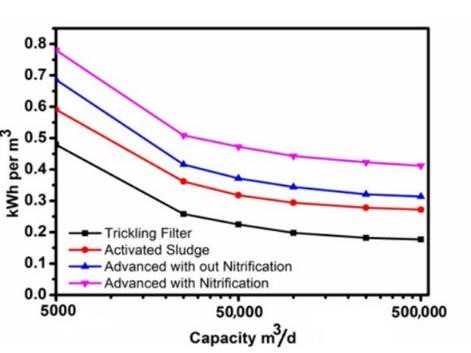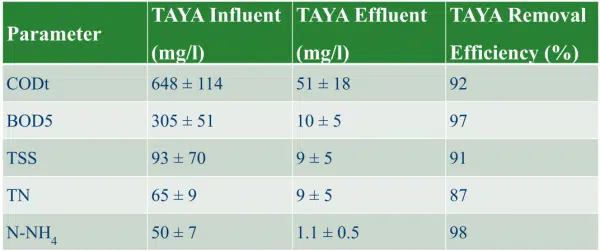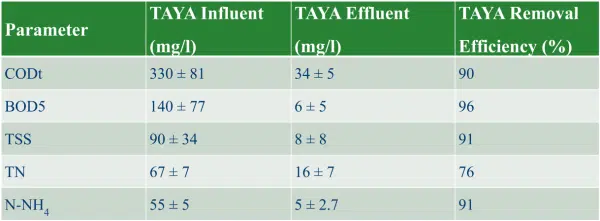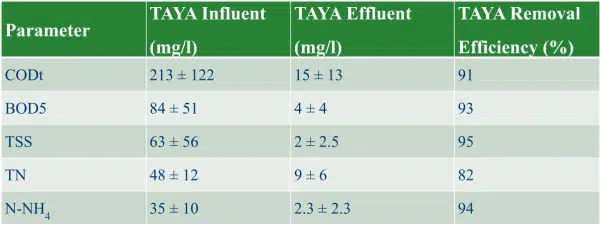TAYA - a novel approach to reciprocal wetlands
Our very own Keren Aizenberg, R&D Manager at TRIPLE-T by WFI company, presented the TAYA technology for municipal
wastewater treatment and irrigation reuse, based on an article written by both Keren Aizenberg and Ronen Shechter.
A game-changing technology for smaller footprint
Extensive processes for decentralized wastewater treatment, are generally characterized by their operational simplicity, and low energy consumption. These processes have been developed gradually over time to meet a higher effluent quality requirement, by using multiple stages, applying suitable aeration and other means. However, extensive processes all share the disadvantage of a high hydraulic retention time, which translates into large footprint in comparison with intensive processes. This drawback is addressed by advanced developments, which intensify the extensive processes while maintaining their advantages.
TAYA, a reciprocal constructed wetland (RCW), is an example of an advanced technology as such.
The TAYA technology has been developed to meet the requirements for a decentralized WWTP, with emphasis on simplicity of operation, process stability and reliability, low operational costs and high effluent quality. The process is based on a fixed biofilm operating at alternating aerobic/anoxic conditions The result is a system with a smaller footprint relative to other extensive pond-based processes, and low electricity demand.
HOW TAYA WORKS
TAYA is based on recirculating the water between a pair of basins (fill & drain), separated by a canal and filled with media such as gravel or plastic. The two basins are connected with a pumping chamber containing two propeller pumps facing each other. The pumps periodically transfer the water between the two basins.
In this manner the wastewater is constantly circulated between the two basins. Basin’s draining provides effective passive aeration by the direct contact of large surface area of the biofilm with the atmospheric oxygen. Filling and drainage cycles provide mixing for mass transfer, while the media also retains suspended solids to produce effluent with low TSS.
Reduce footprint, energy, and opex - with TAYA it's easy
The frequency and cycles composition facilitates conditions for organic matter removal, nitrification and denitrification, all with the same reactor. The process intensification results in a much smaller footprint.
Energy consumption is low due to the use of gravity to pass half of the water volume, as well as the periodic use of propellor pumps at very low discharge head to drain and fill the basins.
Table 1 presents a comparison of size and energy consumption for different ponds-based treatment processes after pre-treatment in an anaerobic pond at T>15°C.
Table 1: Energy and footprint in TAYA, facultative lagoons, aerated ponds and constructed wetland.

Figure 1- Intensive treatment electricity demand3

3 Siatou et al. 2020
Figure 1 presents the electricity demand of intensive wastewater treatment systems, for a daily flow lower than 5,000 m3/day, and for advanced processes with nitrification, electricity demand is minimal – 0.78 KWh/m3, 4.5 times the TAYA electricity demand.
The TAYA process maintains the advantages of extensive treatment: minimum electromechanical equipment, low energy consumption and easy operation, without daily sludge handling, while enabling the production of high effluent qualities, as presented in the following case studies.
Description Of Reviewed Municipal Wastewater Treatment Plants
Case study – Bennett Colorado
TAYA demonstration plant was constructed and operated for 1 full year to provide performance data for certification in Colorado. The TAYA installed was fed with 20 m3/d of primary effluent from a septic tank. Bennett, CO is characterized by a desert climate, with temperature variation between -20 °C in winter and up to 43 °C in summer. Wastewater temperature varies between 8.5-24 °C. Design adjustments were made to adapt the system to winter temperatures such as TAYA Coverage.
Table 2: TAYA at Bennett, Colorado

Table 3: TAYA influent and effluent data
Case study – Zvulun, Israel
Zvulun Regional Council is responsible for 16 communities of various sizes and types, including Israeli and Arab villages and agricultural communities, in the Haifa district of Israel. Although located close to Haifa central WWTP, the council decided to treat its wastewater locally, to save O&M cost and also to allow the reuse for irrigation.
The Zvulun decentralized municipal wastewater treatment plant treats 830 m3/d. The treatment process scheme includes 6 mm screen, two anaerobic ponds (one stand by) followed by 2 TAYA facilities, with a total surface area of 7,200 m2.
Based on 2 years of energy and flow data collection, with a resulting calculated energy consumption of 0.175 KWH/m3.
Case study – Airforce base, Israel
In 2011, a TAYA solution, designed for an average daily flow of 800 m3/day, was installed in an army base,
located in the south of Israel. The process scheme is similar to the one presented in Zvulun.
Table 4: TAYA performance data

TRIPLE-T - BIOLOGICAL WASTEWATER TREATMENT
TRIPLE-T by WFI Group offers advanced, successfully proven biological wastewater treatment solutions that are uniquely designed to alleviate drought as well as other water shortage challenges, by increasing effluent reuse for irrigation, while reducing energy and OPEX, enabling wastewater autonomy.



